Introduction
In the realm of fitness, there are exercises that stand out not just for their effectiveness but also for the multiple variations they offer. One such exercise is the hyperextension. Hyperextensions, primarily known for targeting the lower back, glutes, and hamstrings, offer a plethora of benefits and come in various forms to suit different fitness levels and goals. Let’s delve into the art of hyperextension and explore its key variations.
Hyperextension Exercise: The Classic Move
What it is:
The hyperextension exercise, often performed on a hyperextension bench, targets the posterior chain—primarily the lower back, glutes, and hamstrings. It involves lifting the upper body off the ground or bench while keeping the lower body stabilised.
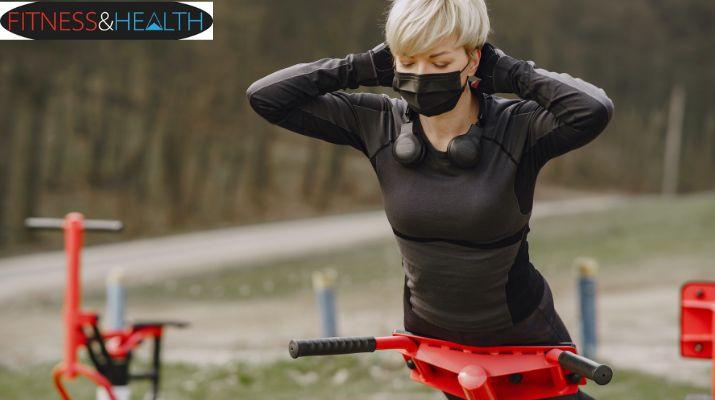
Benefits:
- Strengthens the lower back muscles, reducing the risk of injuries.
- Improves posture and combats the ill effects of prolonged sitting.
- Enhances core stability and balance.
Reverse Hyperextension: Flipping the Script
What it is:
In contrast to the classic hyperextension, the reverse version involves stabilising the upper body and lifting the legs. This is usually done using a specialised machine.

Benefits:
- Intense focus on the glutes and hamstrings.
- Offers a therapeutic effect on the lumbar spine.
- Aids in rehabilitating lower back injuries.
Glute Hyperextension: Targeted Toning
What it is:
A variation that emphasizes the glute muscles. By adjusting the positioning of the feet and the angle of the torso, you can shift more of the workload to the glutes.
Benefits:
- Sculpts and tones the buttocks.
- Strengthens the entire posterior chain.
- Enhances athletic performance, especially in sports that require powerful glute activation.
45 Degree Hyperextension: The Balanced Approach
What it is:
Performed on a 45-degree bench, this version balances the workload between the lower back and the glutes. The inclined angle offers a unique resistance curve.
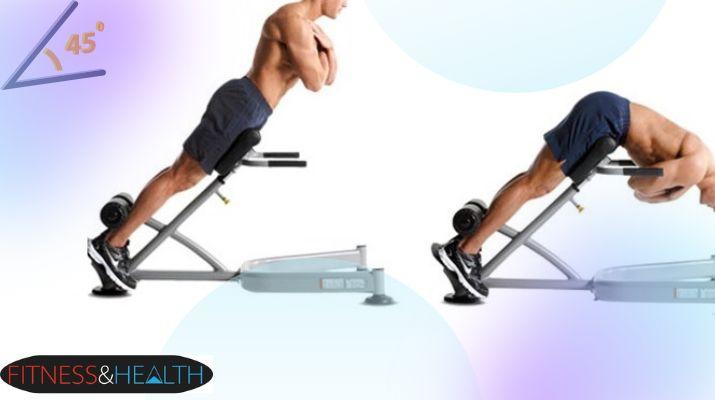
Benefits:
- Offers a middle ground between targeting the lower back and glutes.
- Ideal for beginners and those looking to introduce variety in their routine.
- Reduces strain on the spine compared to the horizontal version.
Back Hyperextension: Focusing on the Spine
What it is:
This variation specifically targets the muscles of the upper and middle back. By adjusting the positioning and movement of the arms and upper torso, you can zero in on these muscles.
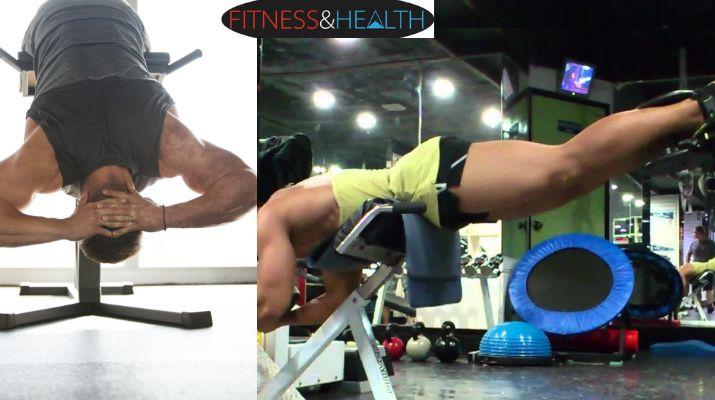
Benefits:
- Strengthens and tones the muscles of the upper back.
- Improves posture and counteracts the “hunched” posture many develop from desk jobs.
- Enhances overall back health and flexibility.
Equipment and Machines for Hyperextension Workouts
Fitness enthusiasts know that having the right equipment is pivotal for effective and safe workouts. When it comes to hyperextensions, there are specific machines and benches designed to facilitate the exercise and its variations. Let’s explore some of the primary equipment you’ll come across in gyms or even for your home setup.
Hyperextension Machine: The Fundamental Tool
What it is:
The hyperextension machine is a dedicated piece of equipment designed primarily for performing the standard hyperextension exercise. With adjustable pads and footplates, it provides the necessary support to safely lift and lower the upper body, engaging the targeted muscles effectively.
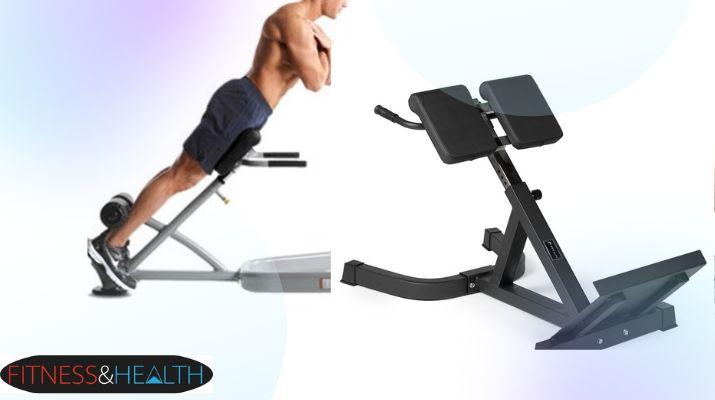
Benefits:
- Provides a stable platform for both beginners and advanced users.
- Adjustable features cater to different body types and sizes.
- Ensures proper form, reducing the risk of injury.
Reverse Hyperextension Machine: Advanced Muscle Engagement
What it is:
This machine is designed uniquely for the reverse hyperextension exercise. With a flat or slightly inclined platform for the torso and straps or rollers to secure the feet, it allows users to lift their legs upwards against gravity or added resistance.

Benefits:
- Targets the glutes and hamstrings intensely.
- The machine’s design offers lumbar support, minimizing strain on the spine.
- Versatility: Many machines come with weight plate attachments for those looking to add resistance to their workouts.
Hyperextension Bench: A Versatile Choice
What it is:
Also known as a “Roman Chair,” the hyperextension bench is a versatile piece of equipment suitable for a range of exercises, including different hyperextension variations. Typically angled at 45 degrees, it has padded supports for the thighs and ankles.
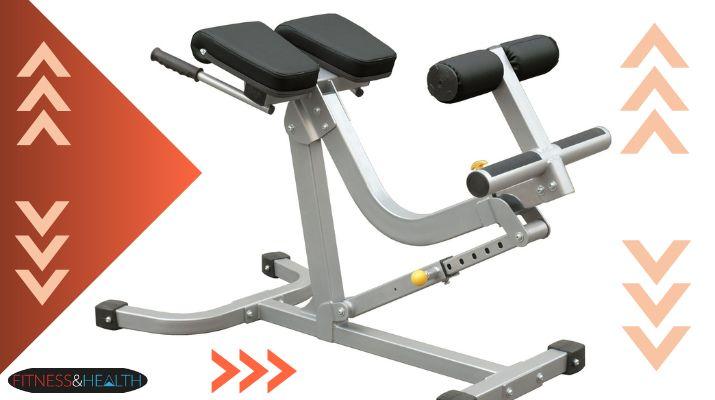
Benefits:
- Multi-functional: Beyond hyperextensions, it can be used for other exercises like oblique twists or weighted back extensions.
- Compact and ideal for home gyms due to its size.
- Adjustable pads allow for customization based on user height and preferred intensity.
Addressing Hyperextension Injuries: Prevention, Protection, and Recovery
Every exercise, when done improperly or excessively, carries the risk of injury. Hyperextensions, while incredibly beneficial, are no exception. Let’s navigate the domain of hyperextension-related injuries, understanding their nature and the protective measures one can adopt.
Hyperextension of the Neck: The Silent Strain
What it is:
Hyperextending the neck involves pushing the head backward, straining the muscles and ligaments at the back of the neck. This can happen unintentionally during exercises or due to accidents.
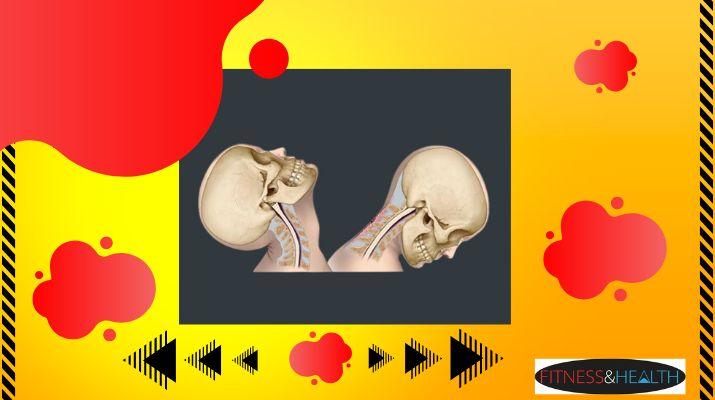
Prevention & Recovery:
- Always maintain a neutral neck position during exercises.
- Incorporate neck strengthening and flexibility exercises into your routine.
- If injured, avoid straining the area and consult a physiotherapist for targeted exercises and treatments.
Knee Hyperextension: More than a Bend in the Wrong Direction
What it is:
Knee hyperextension refers to when the knee bends backward, often due to trauma or weakened ligaments. It can be painful and requires immediate attention.
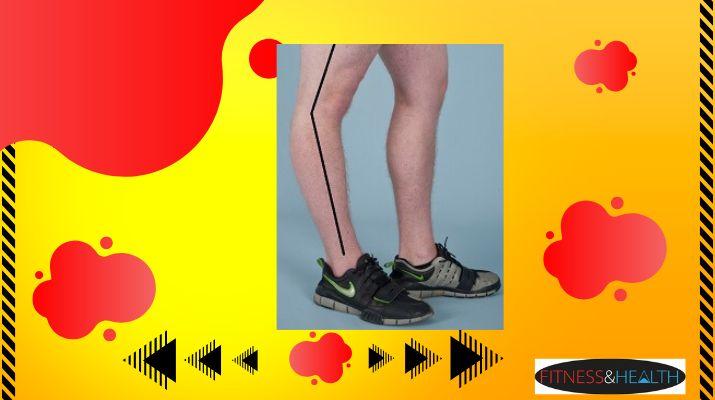
Protection & Recovery:
- Knee Brace for Hyperextension: These are specifically designed to restrict backward movement, protecting against further injury.
- Strengthen the hamstrings and calf muscles, as they provide support and stability to the knee joint.
- Rest, ice, compression, and elevation (RICE) immediately after injury. Consultation with an orthopedic specialist is crucial.
Elbow Hyperextension: When the Joint Overreaches
What it is:
Elbow hyperextension occurs when the elbow joint is bent backward, stretching or tearing the ligaments. Common in contact sports or weightlifting, it can be severely painful.
Protection & Recovery:
- Limit activities that strain the elbow and avoid lifting heavy weights without proper form.
- Use protective gear or support sleeves when participating in high-risk sports.
- Physical therapy can aid in recovery, ensuring that the elbow regains its strength and flexibility.
Conclusion: Safety First, Always
Exercise is a journey, one that should be embarked upon with caution and knowledge. While hyperextensions and their variations offer a host of benefits, it’s imperative to approach them with the correct form, equipment, and awareness to minimize risks. Whether you’re a seasoned athlete or a fitness novice, always prioritize your safety. After all, a healthy body is one that is both strong and injury-free. Equip yourself with the right tools, techniques, and knowledge, and you’re well on your way to a fitter, healthier you.
Thank you for joining us on this comprehensive exploration of hyperextensions. Here’s to strong backs, powerful glutes, and injury-free workouts!
Frequently Asked Questions (FAQs)
What muscles do hyperextensions target?
Hyperextensions primarily target the erector spinae, which runs along your spine. However, they also engage other muscles like the glutes, hamstrings, and the muscles in the lower back. While hyperextensions focus on the back muscles, complementing them with Lat workouts will give you a complete back training regimen.
Are hyperextensions safe for those with back problems?
While hyperextensions can be beneficial for strengthening the lower back, it’s essential to consult a physician or physical therapist before incorporating them, especially if you have a history of back issues.
Can I do hyperextensions without a machine or bench?
Absolutely. Hyperextensions strengthen the lower back muscles, which play a crucial role in maintaining an upright postureYes, you can perform hyperextensions without specialized equipment by lying face down on the floor and lifting your upper body. However, using a hyperextension bench or machine ensures better form and reduces the risk of injury. After setting up your hyperextension workout station, consider exploring the best calf exercises to strengthen and tone your lower body.
What’s the difference between a reverse hyperextension and a standard hyperextension?
A standard hyperextension focuses on lifting the upper body, targeting the lower back. In contrast, reverse hyperextensions involve lifting the legs, emphasizing the glutes and hamstrings.
How often should I include hyperextensions in my workout routine?
For beginners, starting with 2-3 times a week is recommended. As you build strength and endurance, you can adjust the frequency and intensity.
What’s the purpose of a knee brace for hyperextension?
A knee brace for hyperextension is designed to restrict the backward movement of the knee, protecting it from injury and aiding in the recovery process if an injury occurs.
Can hyperextensions help with posture?
Absolutely. Hyperextensions strengthen the lower back muscles, which play a crucial role in maintaining an upright posture. As you prioritize safety in your workouts, you might also be interested in varying your routine with our safe and effective HIIT workouts ensuring you achieve fitness goals without compromising on form.
How many sets and reps of hyperextensions are ideal for beginners?
Starting with 2-3 sets of 10-12 reps is ideal for beginners. As strength and stamina improve, one can increase the sets and reps accordingly.
Can I add weights to my hyperextension exercises?
Yes, adding weights can increase the intensity of the workout. However, ensure proper form and start with light weights to avoid injury.
Are there any common mistakes to avoid while doing hyperextensions?
Some common mistakes include hyperextending the neck, not maintaining a neutral spine, and using momentum rather than muscle strength.
